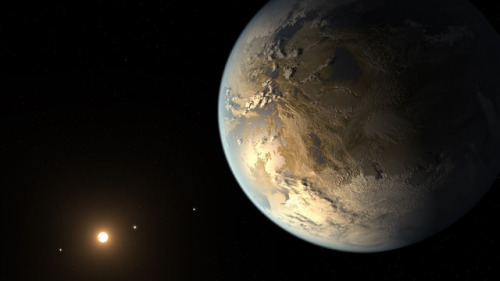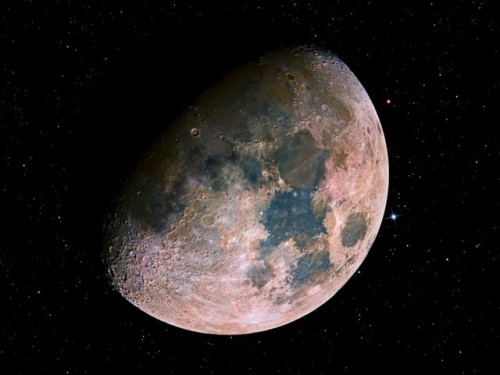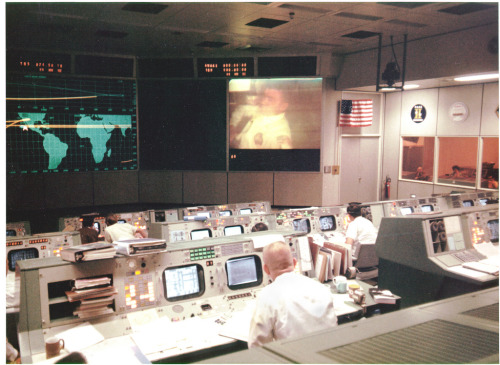Simple Jupiter Photo With 4 Moons - For More Images Of The Cosmos Click Here

Simple Jupiter Photo with 4 moons - For more images of the cosmos Click Here
More Posts from Decimatethestars-blog and Others




Bioluminescent Plankton
Scientists have only recently discovered that this type of plankton glows when they are moved because of stress - ironic when you consider how relaxing the sight of the shimmering waves are in the dark night. Bioluminescence is used as a defence mechanism to draw predators towards the creature trying to eat the plankton. The tiny flashes of light also disorientate and surprise the predator.
These tiny organisms produce light using a chemical called luciferin. The process of creating a bioluminescent light, which is simply light produced within a living creature, differs between organisms. Some need a particular food or another creature for the effect to happen. But this type of plankton, called dinoflagellates, produce luciferin on their own. The light the tiny plankton emit is called ‘cold light’, meaning less than 20% of the light generates heat.
Huge areas of the ocean can become populated by glowing plankton but the effect is especially common in warm-water lagoons that have narrow openings to the sea. This causes the plankton to gather and become trapped, causing the water to turn orange.
Image credit: Will Ho, Kin Cheung, Landscapes Maldives & eyegami
Source: Kuoni

The faint rings of Uranus, shot in 1986, are made of countless fragments of water ice containing radiation-altered organic material.
Credit: NASA/JPL/Michael Benson, Kinetikon Pictures
What's Up - December 2017
What’s Up For December? Geminid and Ursid meteor showers & winter constellations!

This month hosts the best meteor shower of the year and the brightest stars in familiar constellations.

The Geminds peak on the morning of the 14th, and are active from December 4th through the 17th. The peak lasts for a full 24 hours, meaning more worldwide meteor watchers will get to see this spectacle.

Expect to see up to 120 meteors per hour between midnight and 4 a.m. but only from a dark sky. You’ll see fewer after moonrise at 3:30 a.m. local time.

In the southern hemisphere, you won’t see as many, perhaps 10-20 per hour, because the radiant never rises above the horizon.

Take a moment to enjoy the circle of constellations and their brightest stars around Gemini this month.

Find yellow Capella in the constellation Auriga.

Next-going clockwise–at 1 o'clock find Taurus and bright reddish Aldebaran, plus the Pleiades.

At two, familiar Orion, with red Betelguese, blue-white Rigel, and the three famous belt stars in-between the two.

Next comes Leo, and its white lionhearted star, Regulus at 7 o'clock.

Another familiar constellation Ursa Major completes the view at 9 o'clock.

There’s a second meteor shower in December, the Ursids, radiating from Ursa Minor, the Little Dipper. If December 22nd and the morning of December 23rd are clear where you are, have a look at the Little Dipper’s bowl, and you might see about ten meteors per hour. Watch the full What’s Up for December Video:
There are so many sights to see in the sky. To stay informed, subscribe to our What’s Up video series on Facebook. Make sure to follow us on Tumblr for your regular dose of space: http://nasa.tumblr.com.










Dazzling Photos Let You Orbit the Earth with Astronaut Tim Peake

Kepler-186f, the first Earth-size Planet in the Habitable Zone
js

British astronaut Tim Peake taking a selfie. That Union Flag is the first of its kind to have ever experienced the vacuum of space.
-
 milkywayan reblogged this · 7 years ago
milkywayan reblogged this · 7 years ago -
 unusenow liked this · 7 years ago
unusenow liked this · 7 years ago -
 enchantingharmonycat liked this · 7 years ago
enchantingharmonycat liked this · 7 years ago -
 madmax510 liked this · 7 years ago
madmax510 liked this · 7 years ago -
 sublunarse liked this · 7 years ago
sublunarse liked this · 7 years ago -
 vsgroundnet liked this · 7 years ago
vsgroundnet liked this · 7 years ago -
 bntspn liked this · 7 years ago
bntspn liked this · 7 years ago -
 decimatethestars-blog reblogged this · 7 years ago
decimatethestars-blog reblogged this · 7 years ago -
 thesadghostspills liked this · 7 years ago
thesadghostspills liked this · 7 years ago -
 ireallydontwanttodie-blog liked this · 7 years ago
ireallydontwanttodie-blog liked this · 7 years ago -
 esrunyrrag liked this · 7 years ago
esrunyrrag liked this · 7 years ago -
 mexzs-blog liked this · 7 years ago
mexzs-blog liked this · 7 years ago -
 nervoustravelmetalbakery liked this · 7 years ago
nervoustravelmetalbakery liked this · 7 years ago -
 breakcorebot liked this · 7 years ago
breakcorebot liked this · 7 years ago -
 gothauntclaudia liked this · 7 years ago
gothauntclaudia liked this · 7 years ago -
 bunnisweet liked this · 7 years ago
bunnisweet liked this · 7 years ago -
 freehologramreview liked this · 7 years ago
freehologramreview liked this · 7 years ago -
 fangirlstufffromablackheart liked this · 7 years ago
fangirlstufffromablackheart liked this · 7 years ago -
 milkywayan liked this · 7 years ago
milkywayan liked this · 7 years ago -
 goldpilot22 liked this · 7 years ago
goldpilot22 liked this · 7 years ago -
 covveycrow liked this · 7 years ago
covveycrow liked this · 7 years ago
eleon / 18 / they. aspiring astronaut. lover of biology and space.
25 posts



